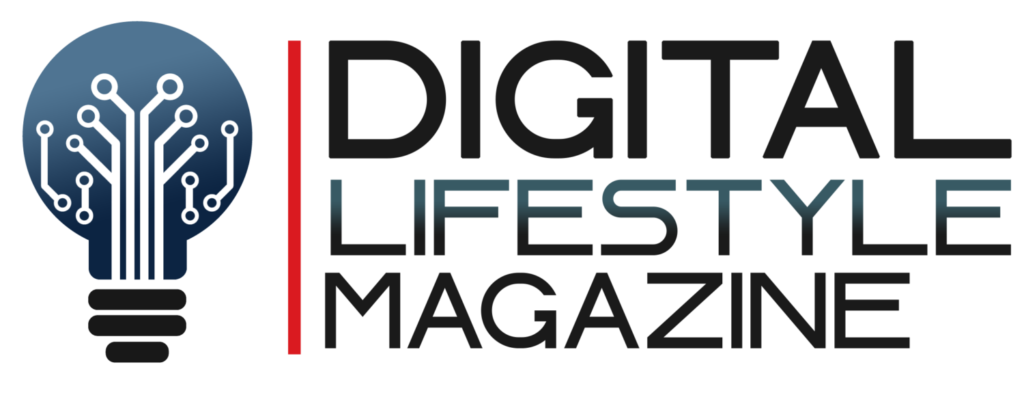Technology has changed the landscape of modern healthcare in the US.
It has had a major impact on how physicians and nurses care for patients in medical settings and will continue to do so as these innovations evolve and improve. Without altering the need for personal interactions between medical teams and the people they treat, technology such as artificial intelligence (AI), 3D printing, and telecare has vastly benefited care provision.
These advances can save time, money, and resources, compared to traditional practices. Moreover, they offer this without any compromise on patient care. Indeed, the precision and efficiency of technological solutions allow clinicians to offer more precise and effective therapies.
Table of Contents
Nurses are key to the adoption and evolution of medical technology
Nurses are at the forefront of delivery when it comes to medical technology, but they are also key to its adoption, and research suggests that they should play a part in its design.
There are numerous possibilities for nurses to become involved with technology, in the form of research, educating patients, and providing feedback to manufacturers.
Dedication to professional development means that nurses have always been, and will continue to be, at the cutting edge of innovative healthcare.
Working health professionals who are considering pursuing an additional qualification may be asking, what can you do with a master’s in nursing?
These professionals should look at the Master of Science in Nursing – Family Nurse Practitioner program at Carson-Newman University. This 32-month course gives students advanced skills and knowledge, which can be put to use in a range of senior healthcare roles.
How does tech relieve the burden for busy healthcare professionals?
Technology can enhance the healing process for patients, but its design has to be user-friendly. This ensures that nurses and other health professionals can also benefit in terms of getting things done swiftly and with less effort.
Whether it is in the form of small wearables, medication delivery devices, or data gleaned from machine learning, healthcare technology is present on most wards and in many clinics. So, why has it become so prevalent, and what are the key advantages?
The working day is more productive
Nurses have a packed schedule every day and coupled with the numerous interruptions they are faced with, getting everything done can be a challenge. Through the use of technology, many of the most time-consuming and tedious tasks can be automated.
This includes sensors that monitor and record a person’s vital signs and then notify a nurse if there are concerning changes. It also includes devices that manage the flow rate of an IV to ensure that each patient is on schedule with their medication.
By allowing technology to manage these repetitive tasks, hospitals reduce the risk of oversight and free up nurses for other aspects of patient care.
Patient records can be accessed in seconds
Electronic medical records are used in most physicians’ offices. They are simple to update and considerably improve clinicians’ access to patient information.
Using traditional paper records has often left nurses searching for relevant information in pages of notes and attempting to understand the handwriting of colleagues.
Moreover, physical records can be lost, damaged, or mishandled, especially when files are shared between departments and contain a lot of inserts. By digitizing the process of documentation, technology allows nurses to retrieve or update information instantly.
Communication is simplified
Teamwork is crucial to success in many fields of medicine and collaborations can take place across departments, states, and countries.
Along with the vast amount of information that nurses can gather online, mobile technology is another innovation that makes it easy to plan for better patient outcomes.
They can use phones, tablets, and apps to coordinate a response with other members of their team, document a patient’s results, and deliver the most current data to the physicians who are designing a plan of treatment.
How do these benefits translate into better patient outcomes?
As well as improving the experience of delivering care, technology can streamline and enhance patient outcomes. Below, we look at some of the most exciting innovations in care today.
Care is accessible in remote areas of the country
During the COVID-19 pandemic, telemedicine was adopted more widely than it had ever been before. Now, a few years later, it has become part of mainstream practice for most healthcare providers.
By contacting a nurse or physician over the phone, or through a video call, patients can cut back on hospital visits that are not essential to their recovery. They can also avoid the problem of picking up an infection and receive excellent care, even if they live many miles from the facility.
In non-emergency care, nurses can work using the data they have received from a patient’s wearable devices. They will be able to measure the patient’s blood glucose level, heart rate, and oxygen saturation, and then offer advice accordingly.
Moreover, they can talk a patient through dressing a wound or treating a minor burn, so a hospital visit is not needed.
AI informs and supports the work of medical professionals
AI is one of the most far-reaching and useful new technologies in patient care. By collecting vast amounts of patient data, research information, and clinical studies, AI, in combination with machine learning, can support an early diagnosis, suggest treatments and make medication safer.
AI technology works by looking at the symptoms that a patient is experiencing and then comparing these to data on similar cases. It can design personalized treatment plans for a consultant’s consideration, predict the level of risk involved, and detect small abnormalities in a person’s test results.
Intelligent symptom checkers are also powered by AI and are now commonplace. They can be used without intervention from a physician. Instead, patients can interact with the device, which asks questions to find out more about their symptoms and then suggests a course of action.
AI has also been at the forefront of precision medication, which involves using information about the person’s genetics, lifestyle, and medical history. After analyzing this data and comparing it to massive amounts of relevant information, an AI system can suggest treatments that are far more personalized than they would otherwise be.
Using the same techniques, AI imaging tools can view diagnostic scans to locate tiny cellular changes that have the hallmarks of cancer or other conditions. This allows clinicians to identify, diagnose and treat the ailment more quickly.
In some instances, it can replace biopsies, meaning that the treatment starts earlier and the patient has the potential for a swifter recovery.
Chatbots can keep patients on track with their medication
Medical non-adherence is a problem across the US, as patients who neglect their medications often struggle to recover or improve their condition. There are many reasons why people do not take their prescribed treatments correctly, but technology can prompt them to make it easier to remember.
This is delivered by chatbots such as Florence. Named after Florence Nightingale, this app can be programmed by a user to send reminders in the form of text messages when it’s time to take a medication.
However, Florence can be used by patients wishing to self-monitor a range of health concerns, from weight loss to their menstrual cycle and more. Another option for patients who are living with chronic illnesses and managing a range of conditions is smart pills.
These emerging technologies include pills that can be tracked so that physicians and a patient’s family can monitor their intake.
Giving a blood sample is faster and causes less pain
Nurses can struggle to find a vein in some patients, making the process of taking a sample tiresome and sometimes painful for them. Additionally, some patients are afraid of needles and may avoid attending the clinic if they are due for a test, which can lead to their condition worsening.
Today, digital technology can be used to spot a vein for use in testing, or inserting an IV. This ensures that catheters are more likely to remain in place successfully and takes some of the stress out of blood tests.
3D printing can personalize a program of treatment
Until the advent of 3D printing, the majority of prosthetics were generalized parts that were designed to fit every patient. Although attention was paid to some aspects of the piece, the lack of detailed customization often made prosthetics uncomfortable to use. Today, a new limb can be made in a fraction of the time using 3D printing.
Not only does it arrive faster because it can be produced using equipment in the patient’s hospital, but it is also cheaper to make and fits the wearer like a glove. In the future, 3D bioprinting is likely to become commonplace. This will benefit patients by recreating vascular, skin, and other living tissues that can be used in their treatment.
Even foods can be printed using a similar technology, giving patients who have to stick with restrictive diets more choice and variety. Along with accessible foods, 3D printing can improve the experience of following a complex schedule of medicine.
This is through the printing of pill boxes that can be taken out and used in public without attracting attention, as this often leads to questions from others, which can stress a patient.
Robots free nurses to get on with direct patient care
Robots are involved in many aspects of medical care, from disinfecting rooms to transporting supplies and helping nurses to lift patients. Some can also greet people at the entrance to a hospital and help patients to navigate around a large health facility.
This is another way that technology ensures that patients have more time with nurses to discuss their concerns and learn more about their condition. Instead of moving specimens and devices between departments, nurses can stay in their wards and allow robots to take the strain.
These automated solutions can also ensure that patients receive the right supplies when they need them. Instead of having to ring for a nurse, patients can have their supplies collected from a central hub and delivered to their room by robots such as Moxie.
Furthermore, patients can rely on automation when it comes to sanitizing the space they visit in a hospital. Hospitals now used robots that employ UV disinfectant routines to cleanse patient rooms in as little as 10 minutes and entire operating suites in 20 minutes.
Keeping in touch with the medical team
Smartphones are everywhere in the modern world and most people have at least one. Although they are designed for general use, these gadgets can also be considered valuable pieces of medical technology. They close the gap between clinicians and patients, ensuring that the lines of communication remain open, wherever the individuals happen to be.
Moreover, physicians can check that the treatment strategy they planned for a patient is working out and provide advice when things go wrong, even if the patient is away from home. Furthermore, the numerous medical apps that assist patients with managing their condition and following a course of treatment are enabled through smartphones.
Point-of-care technology improves patient outcomes
Several solutions combine to form point-of-care technology. This refers to processes and services that can be completed at the patient’s bedside.
This makes them more efficient than other options, but still just as reliable. One of the most useful is testing, which involves specimens and samples that are taken from a patient being tested and processed while the patient waits. This is most useful in acute wards, where swift results are even more vital.
Point-of-care nursing tools, such as rapid strep tests, thermometers, and blood glucose monitors, are another form of this technology. They are ideal for nurses who are interacting with patients in a general ward or daily practice.
Both of these offer results faster, so a patient gets the diagnosis and the care they need quickly. It means that patients are less likely to experience complications and could avoid spending time in the hospital if their symptoms are not severe.
With point-of-care technology, a nurse can listen to their patient, document the conversation, carry out tests, and design a plan of treatment, without leaving the patient’s side.
As a result, nurses have more time to spend with individual patients, and this extra attention can raise patient satisfaction levels.
Smart beds keep clinicians informed and support patient safety
Like many medical technologies, smart beds boost communication between healthcare professionals and their patients. These new beds are designed to prioritize patient safety, while also gathering information that can be useful to the team.
They do this by monitoring a range of statistics, from the patient’s weight to the movements they are making and their vital signs. These integrated sensors then transmit the information that has been gathered to an app on the nurse’s tablet so that they can monitor a patient even when they are not in the room.
Smart beds can also lessen the issue of falls, which are another key concern of hospitals. Often, people fall because they are on their way to the bathroom and don’t want to bother a nurse. They may lack mobility because of an injury, or they may be affected by their medication.
Either way, if they do tumble, it can result in a worse injury and a longer stay. To ensure that patients get the support they need, a smart bed can use sensors to alert nurses when a person is getting up so that they can arrive in time to offer help.
For some patients, getting in and out of bed presents a significant physical challenge. They may be weakened through illness or as a result of their treatment, and need assistance with this basic task.
Smart beds, which incorporate a lifting mechanism, can assist without the need for extra clinicians. This lowers the risk of injury for patients and makes the process much more comfortable.
Enhancing the education of medical professionals
All healthcare workers are dedicated to lifelong learning. It builds their medical knowledge, expands their scope of practice, and improves their standards of patient care. Thanks to online teaching, clinicians have a simple way of studying for further certifications that can accommodate their busy working schedule.
Previously, in order to qualify, working professionals would need to attend classes in person, which can be a challenge for them if they are already juggling a busy home life. Video conferencing, remote learning, and online collaborations mean that in-person classes are no longer the only choice.
Instead, nurses are empowered to overcome any barriers linked to their location or personal commitments. As a result, they are better equipped to deliver excellent-quality care during every patient interaction.
Technology continues to assist and support clinicians
Nursing may be demanding, but it is also an incredibly fulfilling role in which practitioners can positively impact the lives of many people.
While technology takes some of the pressure away from nurses and makes daily tasks easier, it can never replace the empathy and expertise they offer to patients.
Instead, it can be seen as a valuable asset, one that nurses can use to promote and support their practice.


